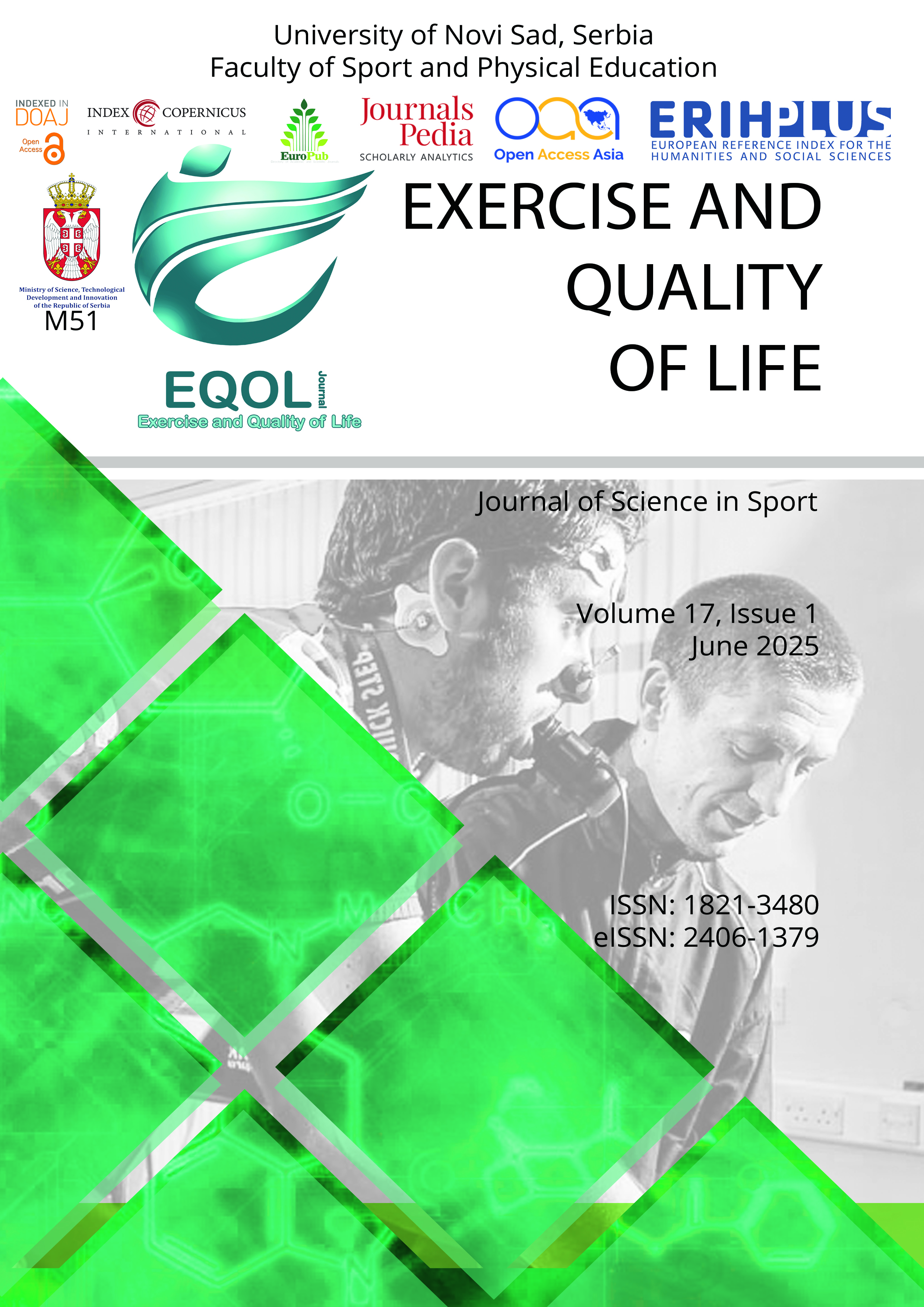Current issue

Volume 17, Issue 1, 2025
Online ISSN: 2406-1379
ISSN: 1821-3480
Volume 17 , Issue 1, (2025)
Published: 15.06.2025.
Open Access
All issues
Contents
02.12.2014.
Original scientific paper
THE IMPACT OF MATERIAL AND TECHNICAL CONDITIONS AND METHODS OF ORGANISATION ON THE MOTOR STATUS OF ADOLESCENTS
Importance of physical education and its placment in the educational system are known for a
long period of time. Many resreaches have been conducted in order to determine the extent to
which physical education positively influences students. Results of some studies show that
physical education classes are unsatisfactory and inappropriate, given the circumstances- age
and individual skills of students, their needs and interests (Arunovic, 1978; Visnjic, 1983;
Krsmanovic, 1988, 1995). Main reasons for ineficinet physical education classes can be found
in the bad concept of modelling teaching syllabuses and small number of physical education
classes per week (Krsmanovic, 1995). The aim of the study is determining differences
between examinees in terms of motor skills, depending on material and technical conditions
as well as method of class organisation that is realization of the curriculum. The participants
in the study were 142 adolescents, 17 years of age (± 6 months ). In order to assess motor
skills 12 motor tests were used. Data processing was done by applying multivariate analysis
of covariance (MANCOVA), significance of difference was determined by analysis of
variance (ANOVA), while differences among examinees of the experimental and the control
group were determined by discriminant analysis. After the experimental treatment, it was
determined that there was statistically significant difference between the experimental and the
control group within the motor skills system.
Milana Katanić, Miroslav Smajić, Alen Kapidžić, Branka Protić-Gava, Ksenija Bošković
02.12.2012.
Original scientific paper
INFLUENCE OF DURATION AND INTENSITY OF WARM-UP SESSIONS ON THE PERFORMACE AMONGSHORT DISTANCE SWIMMERS
It is well established that warm-up sessions are very important and essential part of every
swimming competition. There is much evidence which tells how strong the influence of these
sessions on swimming performance is. Although there are many suggestions about content of
warm-up sessions in swimming, their duration and intensity, there are no clear conclusions about
all segments of warm-up. Because of that many researchers tried to reveal how good warm-up
sessions should look like. In this study 8 male and 4 female competitive swimmers aged 19 to 26
were tested. They were asked to swim three different warm-up sessions followed by 100 meters
performance with maximal intensity. Before trial number 1 they performed long duration warm- up session, before trial 2 short duration warm-up session and before trial 3 they were asked to
perform warm-up session with high intensity. The recovery time between each warm-up session
and the performance was 5 minutes and during these 5 minutes. ANOVA with Repeated
Measures was used to test the differences in the performance that swimmers achieved after three
different warm up sessions. Statistical significance was set at p<0.05. The results showed that
there was not significant difference in the performance after long duration and short duration
warm-up sessions (p=1). On the other hand the difference in the performance on the trial 1 and
trial 3 was significant (p=.02). Furthermore, the difference between trial 2 and trial 3 was
significant as well (p=.03). Duration of the warm up session did not have significant influence on
the performance. On the other hand, the results showed that the intensity of the warm-up has big
influence on the performance. High intense warm-up without appropriate recover can cause drop
in the result. More research needs to be done on this topic with many different conditions.
Goran Dimitrić, Miroslav Smajić, Đorđe Agbaba























